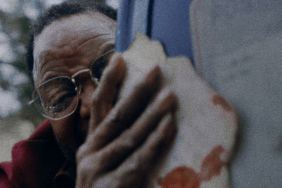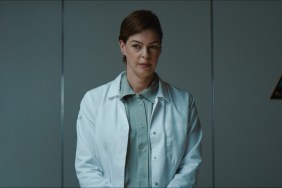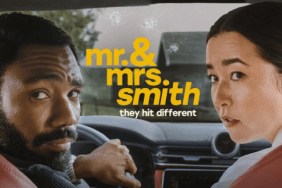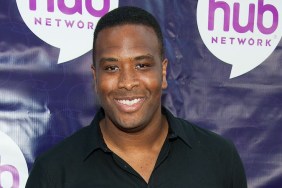
Legendary Spanish horror actress Lone Fleming on her role in TOMBS OF THE BLIND DEAD and its sequel ATTACK OF THE BLIND DEAD.
There was a period, a golden age for European horror, one that coincided with a demand in the US for grittier, sexier material, a wave launched post BONNIE AND CLYDE and one that evolved right in the middle of the visceral media coverage of the Vietnam war. With the MPAA loosening their belt, a wave of new guard young filmmakers emerging and the movies at the drive-in mirroring the real sex and shenanigans that went on in teenagers back-seats, European distributors saw an opportunity to make some money by injecting their fantasy films with grand dollops of suddenly commercial and permitted sex and violence, while never sacrificing that patented atmosphere, eccentric narrative arcs and textural sensuality.
In the middle of that wild wave came Spanish director Amando de Ossorios terrifying and surreal 1971 shocker LA NOCHE DEL TERROR CIEGO or as it was known in the US and other English language territories, TOMBS OF THE BLIND DEAD (or in the truncated AIP version, simply THE BLIND DEAD). Often dismissed as a Latin redux of Romeros groundbreaking zombie shocker NIGHT OF THE LIVING DEAD, TOMBS is something richer, darker and ripe with mythology. In it, three friends – macho Roger, his girlfriend Virginia and her college friend Betty – go for a pleasant train ride into the Portuguese countryside. However, as the ride progresses, we learn in flashback that Virginia and Betty had a lesbian relationship in school and now, as Roger and Betty appear to be getting a little chummier that shed like, Virginia has a momentary breakdown, jumps from the moving train and wanders to the ruined nearby Abbey nestled at the foot of the hill.
And thats when the terror begins.
Virginias comely presence rouses a mummified sect of blood-drinking, centuries dead Templar Knights, their skeletal, eyeless and hooded visages shambling out of their graves in a mass of fog, wielding swords, riding equally desiccated horses and looking for victims. Shot in gauzy slow-mo, the Templar attack sequences are the stuff nightmares are made of and the horror film that supports their appearance is equally eerie.
Ossorios signature magnum macabre opus would spawn three more Templar companion films 1973s ATTACK OF THE BLIND DEAD (aka RETURN OF THE EVIL DEAD), 1974s THE GHOST GALLEON (aka HORROR OF THE ZOMBIES) and 1975s NIGHT OF THE SEAGULLS but none would reach the heights of fright that TOMBS offers in its finest hour.
At the center of TOMBS OF THE BLIND DEADs humanity is a compelling turn by actress Lone Fleming as Betty, a strong woman whose love for her murdered friend spurs her on to solve the mystery of the blind monsters. And Fleming is no stranger to horror. Along with TOMBS, she would star in Ossorios ATTACK OF THE BLIND DEAD and his 1975 EXORCIST clone, DEMON WITCH CHILD as well other shockers like Mario Sicilanos BLACK CANDLES and 1973s IT HAPPENED AT NIGHTMARE INN directed by her husband of many years, HORROR EXPRESS legend Eugenio Martin.
With her blue eyes, strong features and earthy sexuality, Flemings presence always added a kind of intelligent sensuality to whatever picture she grace and its that intellect that makes her one of the most interesting survivors of the Spanish horror boom.
Now in her 60s. Fleming looks fantastic, embraces her cult movie past and now has a successful career as a fine artist, working in paint and sculpture. SHOCK had the honor of speaking with this living legend of European terror, hearkening back to her time with the heartbeat-tracking Templars while musing frankly on art, film, love and her legacy.

SHOCK: Lets go back to your early days in cinema. What was the climate in Spain like at the time, creatively speaking? Was it hard to find roles? Did you have to audition a lot?
FLEMING: You know there were a lot of films going on when I came to Spain. Really, it was almost an industry because we had a lot of comedies, a lot of terror or horror films. Everybody was really working and we didnt get a lot of money. You know I started from the bottom but Im very professional and that is one of the most important things for you to get the role. If youre good, if they like you and youre professional then its much easier.
SHOCK: At what point did you meet your husband? Was it during a film?
FLEMING: We met on the film, as you call it in United States, DEATH AT THE DEEP END OF THE SWIMMING POOL with Carroll Baker and Michael Craig.
SHOCK: Ah, so you met on set. Thats fantastic. What was that initial connection? Was it love at first sight?
FLEMING: Yeah it was. And then we went out and it went on and off and I went to Denmark and I came back and it went on and off again for many years and of course it was a secret.
SHOCK: Do you ever go back and watch any of your older films?
FLEMING: Sometimes if I have to go to a festival and I know they want to ask me about something then I go in and have a look at it. I never like myself in films.
SHOCK: Why is that?
FLEMING: I dont know (laughs). When you do a role you sink yourself so much into it that you dont know how youre going to come off on the screen. I never think about if the light is correct on my face, if I look better this way, I just jump into the role and I couldnt care less if Im not pretty from that side or the other.
SHOCK: The late Jess Franco spoke often about how hard it was to make these kinds of films in Spain initially because of General Francos pious rule. Did you feel any effect of that? Did it adversely affect the arts in your opinion?
FLEMING: I suppose it mostly affected the political side for writers, and for directors if it was a horror film and they wanted nude scenes they had to shoot it twice so the other European countries could buy it so sometimes they had to cut scenes but really I hadnt been in a lot of scenes like that and I never made a completely nude scene.
SHOCK: I know…I looked.
FLEMING: (laughs) You know all my fans in the beginning, they were always looking. Lone! Whats the matter? We cannot find any nude films with you!. I said no, you wont find any.

SHOCK: Why was that? Why did you make that decision when so many of your colleagues were doing nude scenes?
FLEMING: I think it must have been because of my character and also because I started living alone when I was 15 and I started working alone. I think I have so much luck in my life and it must be something in my character that is serious that I want to do my work and thats it. Im very open though so I dont really understand it
SHOCK: What was your take on a lot of the horror films at the time when nudity and sexuality was so much in the forefront?
FLEMING: For example, Jess Francos films? I knew him…
SHOCK: I knew you were friendly with Jess and his partner Lina Romay at some point. At what point did you know them?
FLEMING: Three years ago I went to a festival and Jess Franco was there and I had known Lina for years before that. I never met Jess before and its funny because later, I met him again in Malaga, a year before he died and he looked at me and said Oh Lone! You must make a film with me I said yes! and he looked at me and said no, you wont and I said youre right! (laughs). He knew it! He was so sharp in his mind! He could just see in my eyes I would never make a film with him! (laughs). He was really a funny guy. He could make everybody laugh. I only saw him twice in my life, but a man like that…you know immediately how he is.

SHOCK: Lets talk about Amando who obviously is a very different character, personally and creatively, than Franco. Can you talk about him both as a man and as a filmmaker?
FLEMING: As a man, well we worked three weeks together on the first BLIND DEAD. Amando and I got very friendly and he was a close friend long after the movie wrapped and for some time, until I started up with Eugenio. We used to have coffee where he worked and we talked about art. He was a very kind man but what I loved about him was that he lived in his fantasy world. He just loved the Templars. He never had children so those were his children and he lived it so much, you cannot believe it. He used to come down in the morning in Portugal where we were shooting and hed have these drawings and say Lone this is a scene I know you understand me this is what I want you to do today. Really he was directing through his drawings and I dont think many people know that and I dont think he did it in other films but he did it on that film.
SHOCK: What was it like shooting with the blind dead themselves? Was it at all a creepy experience or was it kind of goofy? Can you remember the climate on set when you were doing those scenes?
FLEMING: You know it was creepy but fascinating because it was such hard work for Amando. You could say in this film he didnt direct us, his actors, too much because he knew he could rely on us so he was all the time working with the Templars. The costumes were so heavy and it was hot and to make the men function in the costume – they were sweating, they couldnt talk. And to make the horses function it was really incredible. I used to stand there when I wasnt shooting just watching him and say My God really that was a lot of work!. He never tired. You could see how he loved it.

SHOCK: He was creating a new mythology with that film, whether he knew it at the time or not. Was TOMBS OF THE BLIND DEAD a big hit in Spain when it came out?
FLEMING: In Spain it went alright but in all other European countries it did very well. I know in Germany it was a number one hit and all in South America and all other countries. But you know Spain is different, what can you do about it? (laughs).
SHOCK: Do you think Amando ever felt marginalized in his own country to some degree about his work?
FLEMING: Yeah maybe a little. He could have had better respect here but it doesnt matter because he knows now how important his films are…really he does, wherever he is.

FLEMING: I liked that role. I liked very much the scene where I save my daughter I loved that. You know I dont think many people really look at that scene but I think its great.
SHOCK: Its the humanity of the film, in many respects…
FLEMING: Exactly. I loved that. Amando said to me, Lone I would very much like you to do this but of course its not as big a role as TOMBS OF THE BLIND DEAD. I said dont worry I would love to do it.

SHOCK: Lets flash back to TOMBS OF THE BLIND DEAD, to that scene, the flashback love scene between you and Virginia (played by actress Maria Elena Arpon). Its not an explicit scene at all, its very romantic and gentle, but its still a very early lesbian scene in a horror film. Can you talk about that?
FLEMING: (laughs) When we were going to make the scene, Amando came to me and he said Lone, I dont know how to make this scene because Ive never known a lesbian. I said Amando, I havent either! So what are we going to do to? he said Lone you must do it – you and Elena I said OK. Go and buy a bottle of wine and a rose I dont know why I asked for the rose. We drank half a bottle each and you know, we just did it so beautifully, I think. I really loved that scene
SHOCK: Were there a lot of outtakes? Did you laugh a lot or did you just go for it?
FLEMING: We just went for it.
SHOCK: You make a very convincing lesbian.
FLEMING: For that, you really have to get into the scene and that was indeed a difficult scene. Its kind of like my drawings. If you can imagine, my drawings are just one black line with the bodies and nothing else and its a lot of work. I have to do a lot of drawings and then clean them and clean them and clean them.
SHOCK: Is this your own style or are you influenced by any other artists?
FLEMING: No, its my own style. I started to do it really whenever I was working. I started just drawing these lines and I said one day I will come out with them and I have now but it has taken me a long time because I dont have time just to sit and draw and draw and draw. My sculptures are really the same style also.

SHOCK: Back to the films, there seems to have been a Spanish horror renaissance in the past decade. What are your thoughts on contemporary Spanish horror are there any filmmakers that you think are doing exciting work today?
FLEMING: I dont have any favorites. There are some very good ones. Im not for favorites. I like the films or I dont like them. I think there are many who have a lot of talent but there is no money. I think a lot of these young directors have been studying in the United States but then come back and there is no money so they have to make these no-cast movies and its the same. When I think of Amando, what he could have done if he had money. They have to make the film for almost nothing. They dont pay the actors and they dont get paid either but the need to work is so great and I think if they had money and the facilities they could do really fantastic movies.

SHOCK: Tell us one thing that maybe youd like your fans to know about you that they dont. One secret about Lone Fleming…
FLEMING: One secret hmmm…oh, I should have thought about that (laughs). I really dont think I have any secrets.
SHOCK: Thats your secret, then. That you have no secrets!
FLEMING: (laughs) No, my life is an open book!
Note: Portions of this interview appeared in DELIRIUM #2 available for purchase here.









